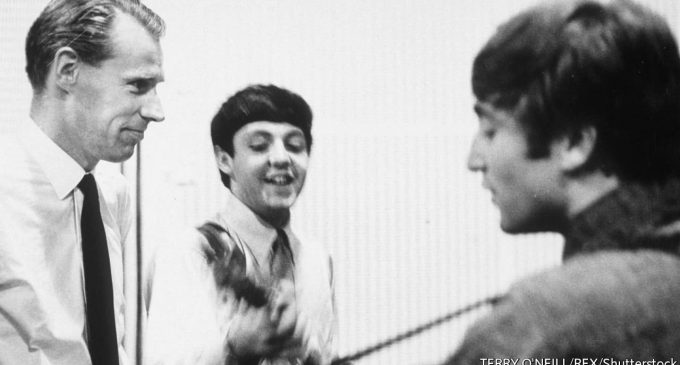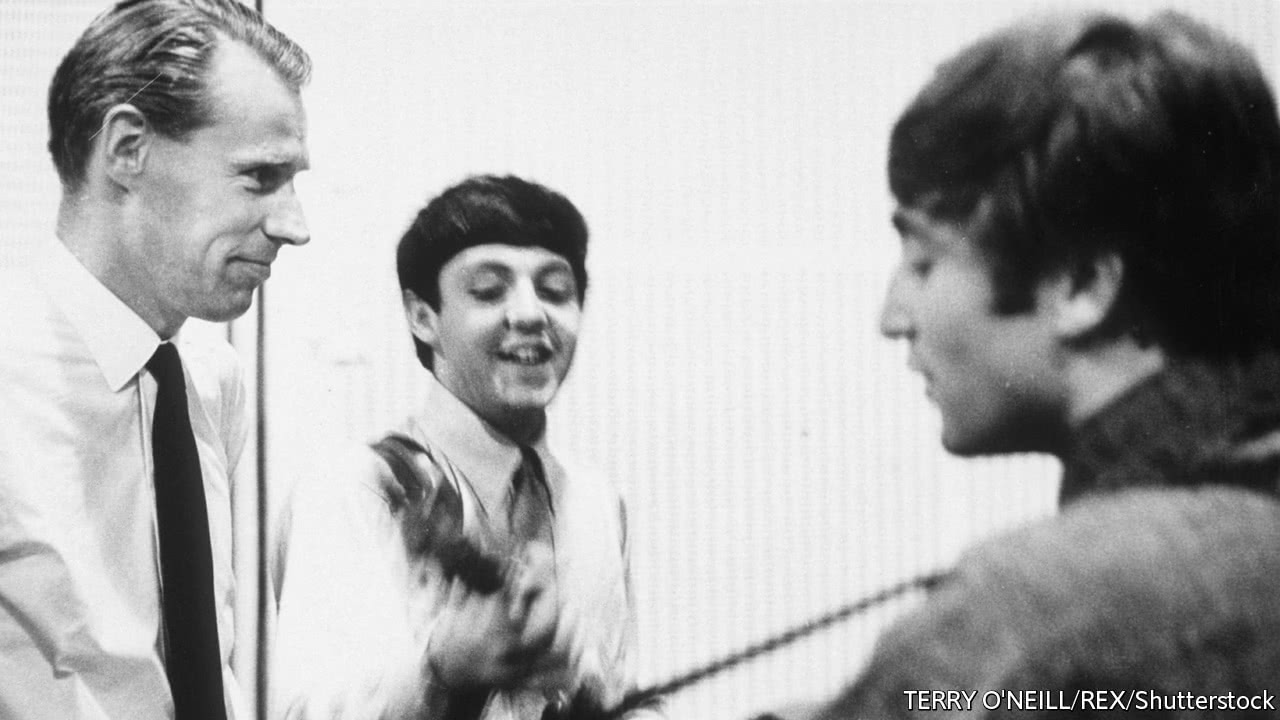The first biography of George Martin, the Beatles’ only producer

I
IN MODERN music, rock bands change producers every other album to aid in finding a new sound, and hip-hop artists use different producers on every other track. But throughout their eight-year recording career, the Beatles only had one producer: George Martin. What was it about him that allowed him to keep up with the most dynamic of bands?
Martin’s death last year was the impetus for the first volume of Kenneth Womack’s “Maximum Volume”, covering 1962-1966 and looking to answer that question. Mr Womack’s book profits from previous books by Geoff Emerick and Ken Scott, engineers at the Beatles’ Abbey Road studio sessions, and Mark Lewisohn’s revelatory “Tune In”, which went farther than anyone into the details of Martin’s private life and work before his meeting with the Fab Four. But Mr Womack’s is the first book dedicated to Martin himself, much celebrated, but still often treated as a fifth wheel than as what he truly was, the fifth Beatle. Mr Womack provides sorely needed new context about the producer, given the ossified Beatles mythos. Why did the Beatles end up at Abbey Road with a record contract in the spring of 1962 after having been turned down by EMI three times before? London’s music industry was hidebound, but it also had an insatiable desire for new hits. Everyone else told the Beatles “no”; Martin was the only one that said, “let’s have a go”. He was only obligated to record six sides for the Beatles; instead, he made the unheard-of decision to give a rock band a full-length debut album.
The reason he did so lies in Martin’s personal connection with the band members, and not just with their music. He had risen to become the head of artists & repertoire (A&R) for the struggling Parlophone label in 1955, and knew he had to get his label quickly back on firm footing. Under Martin, Parlophone began to see returns on his gamble on British comedy recordings: he had surprise hits with Flanders and Swann, The Goons, Beyond the Fringe, Bernard Cribbins and others. Their cheeky anti-establishment humour would do much to prepare Martin for his new charges from the north, and in turn, endear him to them. It was the Beatles’ humour as much as their musical talent that won him over.
John Lennon and Paul McCartney saw themselves as songwriters in the tradition of the Brill Building, the New York-based centre of the American music industry that dominated the pop charts at the beginning of the 1960s. That was astonishingly ambitious—but they succeeded. In 1963, George Martin’s productions of their songs topped the charts in a startling 37 of 52 weeks.
Martin was crucial to the duo’s transformation into hitmakers: “I taught them the importance of the hook. You had to get people’s attention in the first 10 seconds, and so I would generally get hold of their song and top and tail it.” Or, as Mr Womack puts it: “George was possibly the single most influential person in their world, really the only one who could impinge upon the nature of their music.” The producer was indefatigable, spending marathon hours listening, polishing, arranging, scoring, recording, performing, overdubbing, editing and mixing.
He also refused to profit unduly from his clients’ work, even though it was Martin who transformed the role of producer from a manager to a collaborator, deciding what does and doesn’t work. The flipside to all of this noble work, as Mr Womack gently informs the reader, was Martin’s absence from his family in Hatfield, leaving his wife and taking up a new life with his secretary in London, whom he would later marry. In this way, Martin was always on hand to keep to the Beatles’ breakneck touring and promotional schedule while also producing two albums and three singles a year, and finding time to compose incidental music for their first feature film, “A Hard Day’s Night”, for which he also earned an Oscar nomination. In between those sessions, Martin produced hits for Matt Monro, Judy Garland, Ella Fitzgerald and Shirley Bassey, whose recording of “Goldfinger” for the James Bond film still stands as a landmark, largely on Martin’s brassy production.
The breakthrough moment in “Maximum Volume” arrives in the summer of 1965. Martin and his fellow producers were stung that EMI ignored their pleas for royalties on their own work, in contrast to what American producers were routinely earning. Martin finally freed himself from the parsimonious clutches of EMI, taking their best producers and staff in a daring bid to go independent, forming the successful—and highly equitable—Associated Independent Recording.
Mr Womack closes with the recording of “Yesterday”. None of the other Beatles feel they can effectively contribute to McCartney’s ballad. This is when the fifth Beatle steps in, carefully working with the sensitive young composer to score a string quartet that perfectly captures the pathos of the melody and lyric without sounding mannered and slick. This marks the moment when Mr Martin opened the door to all the band’s future accomplishments, as the Beatles ceased touring and took their work from the stage to the studio, from Beatlemania to pure music.
Source: The first biography of George Martin, the Beatles’ only producer




There are no comments at the moment, do you want to add one?
Write a comment